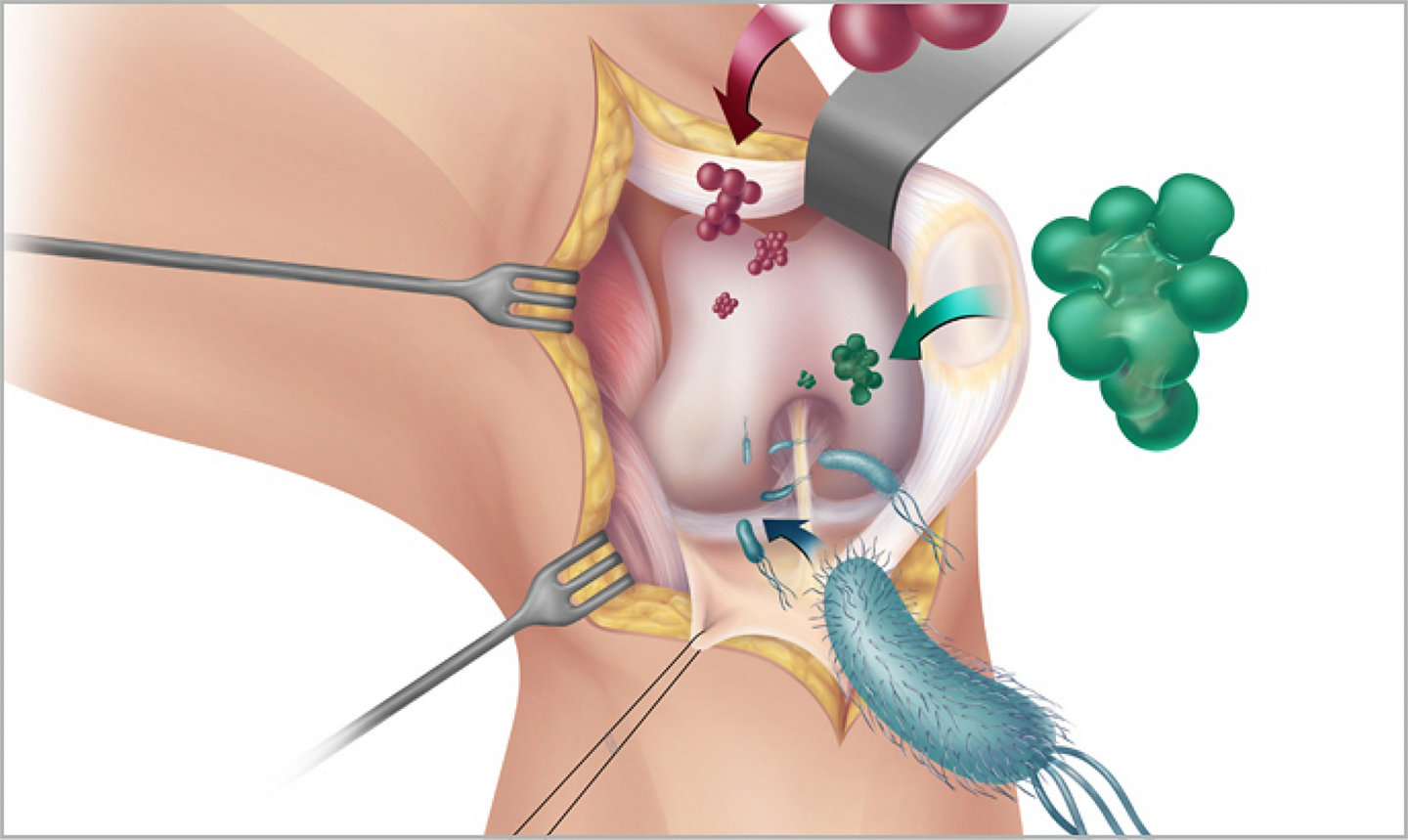A closer look at 2% chlorhexidine gluconate (CHG) cloth for surgical site infection prevention
29-Feb-2024

4-minute read
A meta-analysis and systemic review finds use of local skin antiseptic with CHG cloth preferred to bathing
In a 2023 article published in Orthopedic Clinics of North America, authors Dr. Zhongming Chen and Dr. Michael Mont reviewed studies evaluating the outcomes of chlorhexidine cloth use in surgeries.1 They found a benefit of the ready-to-use, no-rinse 2% CHG impregnated cloths and recommend that dual application (night before and morning of surgery) should be the standard of care.
The cost of lower extremity infections
Nearly one million lower extremity procedures are performed in the United States each year with an eventual lifetime infection rate of 1.5%. This causes increased readmissions, morbidity and mortality. Cost estimates of these infections can be as high as $3.18 billion per year, so it’s become a priority to reduce them through various preoperative, intraoperative, or postoperative strategies.
Preoperative strategies: The role of chlorhexidine gluconate in infection reduction
The authors were interested in the preoperative utilization of chlorhexidine cloths as one of the strategies that can help reduce infections.
A review of the uses of antiseptic agents
The authors reviewed studies that establish precedence for the use of antiseptic agents as a strategy to reduce surgical site infections (SSIs). They provide a listing of products used as common antimicrobials along with advantages and disadvantages of each and include alcohol-based solutions, povidone iodine, as well as combinations of chlorhexidine-based products. The authors list two ways to utilize chlorhexidine: as a rinse-off wash the night before or as a no-rinse cloth application. This was supported by a study done by Edmiston et al. where they compared the activity of 2% chlorhexidine-impregnated preoperative skin preparation cloths with an application of 4% chlorhexidine solution in a total of 30 subjects.2
Comparing clinical outcomes
The microbial reduction was significantly greater for the sites treated with the cloths at approximately six hours after preparation (3.64 vs. 3.15, p<0.01). Chen and Mont surmised that using 2% chlorhexidine gluconate cloth local applications would be superior to using solutions in terms of reducing bacteria. The other advantage of this approach, as noted by the authors, in addition to simply applying the chlorhexidine, is that different areas of the body can be specifically targeted. Additional support came from the Musculoskeletal Infection Society (MIS) recommendation for the use of 2% chlorhexidine gluconate cloth on targeted areas of the body to eliminate the need to bathe just before surgery. This was supported by the study written by Johnson et al. which found a significantly lower incidence of surgical site infections in patients who used the cloth protocol versus the comparison group (p=0.021).3
In another study by Ryder, dual application, the night before and the morning of, found a greater residual of chlorhexidine gluconate on the skin compared to the residual left after use of the solution (p=0.016).4
The authors examined the costs associated with the use of 2% Chlorhexidine gluconate cloth given the impact of a periprosthetic infection and found it to be a cost-effective prevention strategy. A study by Kapadia et al. confirmed this finding.5 Chen and Mont also examined the use of CHG in other research studies of orthopedic and surgical specialties and found the use of the 2% CHG cloth beneficial in reducing the risk of infection.
Summary and recommendations
In summary, the studies reviewed by Chen and Mont show that the use of Chlorhexidine gluconate cloths can help reduce the incidence of deep infections after lower extremity joint arthroplasty. They recommend the use of 2% Chlorhexidine gluconate-impregnated cloths instead of a solution the night before and the morning of surgery. The authors believe that there is a benefit to using 2% CHG cloths for local skin antisepsis before all hip and knee lower extremity surgeries, as well as other surgical specialties. They also recommend future studies to address and enhance patient compliance, confirm applications, and the use of 2% CHG cloths in other surgical specialties.
To view the full article click here.
Our clinically proven systems can help standardize your pre-op approach for maximum efficiency and enhanced compliance to reduce surgical site infections. To learn more, click here.
References:
1. Chen Z, Mont MA, The Utility of Chlorhexidine Cloth Use for the Prevention of Surgical Site Infections in Total Hip Arthroplasty and Surgical as well as Basic Science Applications, A Meta-Analysis and Systemic Review, Orthopedic Clinics of North America, 54;(2023):7-22.
2. Edmiston CE, Seabrook GR, Johnson CP, et al. Comparative of a new and innovative 2% chlorhexidine gluconate-impregnated cloth with 4% chlorhexidine gluconate as topical antiseptic for preparation of the skin prior to surgery. American Journal of Infection Control 2007;35(2):89-96.
3. Johnson AJ, Kapadia BH, Daley JA, et al. Chlorhexidine reduces infections in knee arthroplasty. The Journal of Knee Surgery 2013;26(03):213-18.
4. Ryder M, Evaluation of Chlorhexidine Gluconate (CHG) Delivered to the Skin Following Standard Pre-Op Prepping Protocols of 4% CHG Solution Versus No-Rinse 2% CHG Cloth. American Journal of Infection Control 2007;35(5):E25.
5. Kapadia BH, Johnson AJ, Daley JA, et al. Preadmission Cutaneous Chlorhexidine Preparation Reduces Surgical Site Infections In Total Hip Arthroplasty. The Journal of Arthroplasty 2013;28(7):1061-65.
Disclosure:
Dr M.A. Mont is a board or committee member for The Knee Society and The Hip Society, receives research support from National Institutes of Health and is on the editorial board for the Journal of Arthroplasty, Journal of Knee Surgery, Surgical Technology International, and Orthopedics. Dr M.A. Mont also receives company support from 3M, Centrexion, Ceras Health, Flexion Therapeutics, Johnson & Johnson, Kolon TissueGene, NXSCI, Pacira, Pfizer-Lily, SkyeBiologics, SOLVD Health, Smith & Nephew, Stryker, MirrorAR, Peerwell, US Medical Innovations, and RegenLab. All other authors have no conflict of interest to disclose.
SAGE-SC-COMM-974614_REV-0_en_us
